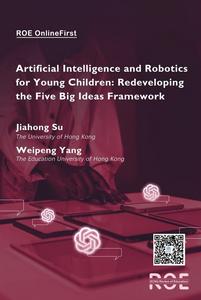
AI Overlords is a series of conversations with leading entrepreneurs and executives building in the AI ecosystem.
Generative AI, or artificial intelligence used not just for repetitive tasks but for creative work, has become a bit of a buzzword ever since ChatGPT burst onto the scene late last year. Though lots of people are still using it as an experiment, giving the model ridiculous prompts, or turning them into a Fatal Attraction-style chatbot, Jasper has done something different.
The company uses AI to help businesses write marketing content seamlessly, in the tone of voice customers relate to and find familiar, a jillion times faster than a human being can write that same content. The company’s relentless focus on solving real customer problems is one of the main reasons I decided to lead Jasper’s first seed round (full disclosure), and it’s why I think Jasper will be the first great generative AI company.
As CEO Dave Rogenmoser explains in our conversation below, his company sees generative AI as a tool to solve businesses’ real-world problems. “I had just been spending so much time with marketers and so, so much time writing copy and content” with his other companies. The ability to cut that time with AI while still producing fresh, creative, engaging content was something he and his co-founders knew could be crucial for other businesses. In our conversation, edited for length and clarity, we cover the fun side of being an entrepreneur, how Jasper will continue to lead in the space, and the future of generative AI.
You’ve attempted to start a lot of companies over the past eight years. What kept you going?
I think Jasper is probably the fifth or sixth company. Some of those were short-lived and blended together, but my cofounders and I had a lot of fun doing it the whole time. We just wanted to start something of our own and be our own bosses. Entrepreneurship is such an interesting intellectual challenge and experiment — it’s mostly just fun to have the challenge every day of figuring out what to do with all of your time and your energy and your resources and your money.
There was never really a time when we wanted to give up. I think there were times we swore off certain business models or things like that. At one point, we thought, we’re never hiring, we don’t want to hire — managing people is so much work. We’ve obviously not held onto that — we’ve ended up hiring a bunch of people. But there was never a time where we said, “We’re just gonna go get jobs somewhere.”
How did you get interested in using AI and decide to build a business around that?
Two and a half years ago, when I first started seeing tweets about ChatGPT my first thought was, “Oh, we’re going to use this to write a bunch of SEO articles so our business can rank really well.” But when we finally got access to it, we saw how good it was.
I didn’t know anything about large language models (LLMs). I had never heard the term. I just felt like, “Oh, that’s really good output, and I know exactly who would want that. And I think I know how we could take it to those companies as a product.”
Were you surprised, when you did get access to the ChatGPT model, at how it was being used?
I think I was surprised that people weren’t taking it more seriously, or didn’t know what to really do with it.
We had gotten into the Slack group with people that were using GPT-3 and I thought everybody in there was going to have these amazing ideas of what this could do. But as I was reading through the messages, I thought, Nobody here understands how valuable this is. Everyone thinks it’s just a toy.
If you weren’t working on Jasper, what would you be working on?
My answer right now is I’d be building world-class golf courses. But if I weren’t doing that, I’d be doing something in generative AI. I would just pick an industry and start asking them a lot of questions about the work that they’re doing and how they’re doing it. Can you show me that whole workflow, end to end, and other parts of the process that you think are really tedious or painful? And how much would you be willing to pay to have those painful parts removed, or minimized?
I think you’ve got to start with the problem first. Too many people start with the technology, and then they have a hammer, and they’re looking for nails. I think it’s easier to start with the end market.
Which entrepreneurs inspire you?
I love Jeff Bezos. I love his obsession with the customer; it’s a very simplifying way to view the world — especially in a time like this. There’s so much innovation, so much crisis. Starting with the customer when you’re trying to filter all that noise — I think that’s very simplifying and freeing.
So how would you describe the essence of Jasper, and what makes Jasper unique?
We help businesses, particularly marketers, write great content, great copy, and improve their marketing using AI. We have an app that allows you to write blog posts faster and write better ad copy, improve your sentences — just generally write content better and faster.
We started with the end customer in mind. We focus on businesses, whereas a lot of the large language models are more generalized and might work for a variety of different industries.
Instead, we say we’re going to build tools that are great for marketing teams. I think out of that focus not only comes a whole bunch of decisions around our product, and what templates we have, and what use cases we really support, but also our training, our community — all of that weaves together to make a powerful package for anybody who’s looking to do better marketing.
Our support team is incredible, and our education team, too. From the beginning we weren’t just training on how to use our tool. We were training on how to do great marketing, of course, using our tool. We’ve always focused on high-quality outputs, using the data that we collect from users, and we’ve got the most paying users of any of our competitors. We are able to use that data to go and fine-tune models, to make the outputs even more unique and powerful for our users.
The whole tool together is designed in an elegant way so you can write that blog post way faster. The ad copy of the email and the output’s going to be really, really high quality.
What were some of the hardest parts about creating Jasper?
Something that we think about a lot as a challenge is how to build products that won’t be obsolete in 30 days or 60 days.
Obviously every company goes through this — it’s just usually not so fast! Sometimes we’re building something that we might delete completely in 45 days, and, at the same time, we’re thinking we shouldn’t build it because those 45 days will still be really valuable. But we’ve learned to be openhanded and understand the tradeoffs and be okay with that. That’s a unique balance that I’ve never had to think through in my prior companies.
How do you think about the defensibility question for Jasper?
Longer term — and I’m talking a year or two — models will become much more of a commodity, and you’ll get to choose which ones you use. That’s where the customer relationship becomes critical: to understand their pain, and then go and build an application on top of these models that really solves that pain in a deep way. The models will be generalized. But there’s always the ability to fine-tune and use the data that you have to differentiate and build. I’d say defensibility around that is where we focus.
At some point over the next few years, I think the data become less important, and the models are just so good out of the gate that it’s really hard to fine tune them to any significant improvement. But all the business fundamentals remain the same. We want to make Jasper something that is multi-user, and that teams are collaborating on. We want to make it integrated into every part of your stack. We want it to be something that is trained on your tone of voice and your company, and just make it this really sticky product that even if something else came out that was 10 percent better or 20 percent better, you would never leave because Jasper is so well-integrated into your system, your workflow.
What are some of the other applications or tools that are exciting in the generative AI space?
I’m really interested in the question of, How do we just interact with computers and applications in a more conversational way? I think the ability to transform data is incredibly powerful and unique. The fact that we can tell AI, “Take this Excel spreadsheet and turn it into a JSON file,” or something like that which requires advanced abilities.
Then, just thinking through use cases end to end. Eventually, I think you’re going to see AI involved in the whole process of, let’s say, writing a blog post, image creation for that post, and then distribution of that post. And if you can do multiple layers in the chain, and use large language for each one of those steps, you can create these really, really powerful magical experiences for your users.
How about infrastructure? Because I think there’s still a lot of room to grow there.
The biggest bottleneck in the space at large is access. Whoever has access to the model has a significant leg up and it shouldn’t be that way. I can imagine if no one’s fighting over trying to get these things and get training and time, how much more innovation could really happen.
So the actual hardware is probably the primary bottleneck that needs to be solved.
I think training data and models going out of date quickly is a significant problem. That is probably our customer’s number one complaint — why does the model not know anything that’s happened recently? I don’t know the solution to that. Above my technical pay grade.
A big problem right now is these models hallucinate. These models, even if they might know the facts, they don’t stay on track with them, and they don’t use them, and they don’t tell the truth all the time. That’s probably our second biggest customer complaint: Why is this thing making stuff up when it doesn’t know the answer? There needs to be some bigger breakthroughs in how we create the core models to go and actually solve that.
What are some things you might see in three years in this ecosystem?
Three years just feels like an eternity! I think you’ll see a lot of AI-first companies come out and start to disrupt the incumbents. I can see a bunch of powerful application companies like ourselves come out that solve a problem for a specific user in a deep way. That’s going to be very disruptive. I think there’s going to be a whole lot of other tooling that supports them that’s going to be built up in the ecosystem as well.
What about venture capital’s role in the space?
There’ll be the next shiny thing. It’s not like this fades away but it becomes a more normalized, everyday thing.



